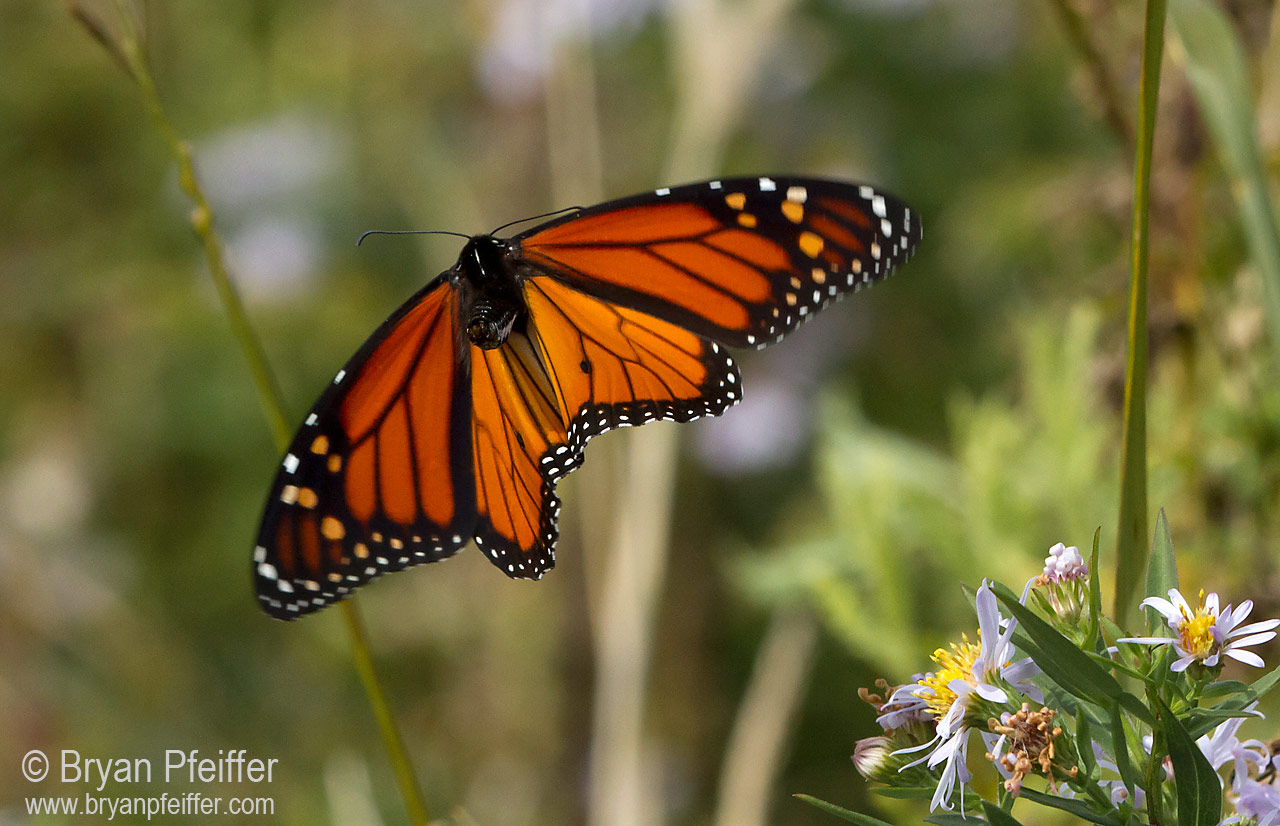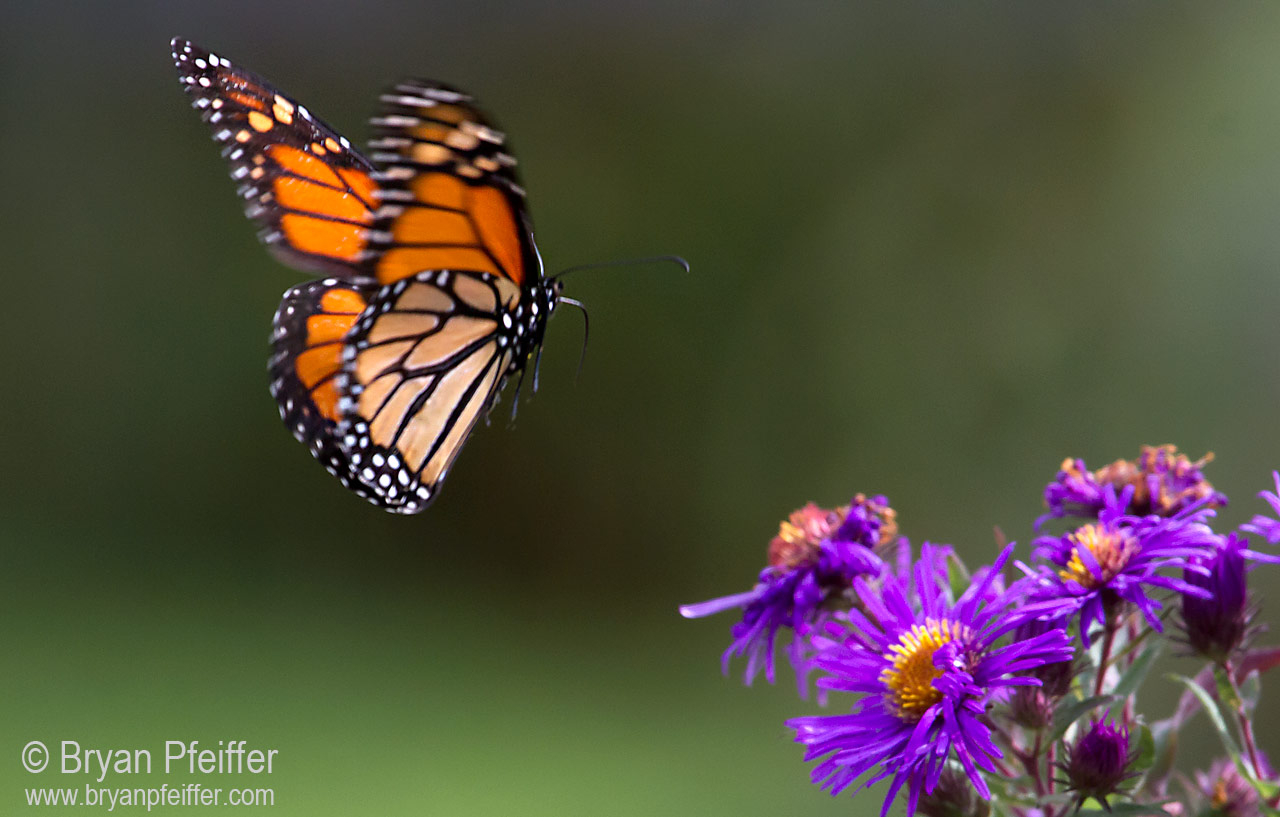The Last Monarch
HERE IS YOUR LAST GASP OF SUMMER. Yep, most of the Monarchs are long gone – off with the winds to Mexico. But I’ve encountered America’s favorite butterfly here in Vermont as late as October 31 and along the Maine coast as late as December 1. So keep watching.
These late southbound stragglers may never make it to wintering sites in Mexico. Nectar sources along the way become scarce this late. And weather can present an obstacle. Where they end up, we’re not entirely sure. But we now find Monarchs over-wintering and wandering in the southeastern U.S. And it seems that some are wintering farther north than ever – life on a warming planet. (Of course, western Monarchs still winter in California.)
My two photos here came from Monhegand Island, Maine, on September 25. (I tried to get flight shots – with limited success.) Monhegan was lousy with Monarchs this year – a delightful close to a dismal season for our famous butterfly. The wintering poplulation last year plunged to its lowest levels ever recorded. We might yet see Monarchs rebound a bit. These are insects, after all, capable of big population swings.
Even so, biologists who study Monarchs say they now need the protections offered (sometimes) by the Endangered Species Act.
“Monarchs are in a deadly free fall and the threats they face are now so large in scale that Endangered Species Act protection is needed sooner rather than later, while there is still time to reverse the severe decline in the heart of their range,” said Lincoln Brower, preeminent monarch researcher and conservationist, who has been studying the species since 1954.
Read more about Monarchs from the Xerces Society, a conservation group you might consider supporting. Xerces works with passion on invertebrate protection and conservation. I’m about to renew my membership. As they like to say at Xerces, “We speak for the spineless.”



Only two monarchs spotted up on Upper Road in Plainfield, although we had lots of milkweed…too many humans, too few monarchs…
Thanks! I’ve just updated the link. Sorry, everyone!
Thanks for this post, Bryan. Just a head’s up that when I clicked on the link to the Xerces Society link, it came back with, “Oops! That page can’t be found.”
Lovely photos, and an important post. As more and more agricultural acres are planted in crops engineered to kill “pests,” Monarchs are thought to be dying along with those pests (as are other pollinators). Planting your locally native species of milkweed (check with your state’s Native Plant Society) and surrounding the milkweed with plenty of nectar-producing wildflowers is one way to help this struggling species survive. Thanks, Bryan, for calling it out.
Hooray! for the companionship of Asters.
Monarchs in inner city Boston, too.
z
We saw more monarchs this late summer in northern Vermont than we have for years – particularly during the warm spell in October. Maybe 18-20 altogether?
Love that shot! I grew two acres of milkweed this summer and sighted only three Monarchs the entire season. Now that was discouraging.
Thank you for this post, Bryan. I’ve seen few Monarchs, last summer or this. I, recently, moved to Troy, New York & am gratified to see large numbers of Milkweed plants in a park near my new home. I saw Monarchs, there on October 7, 2014.
Very nice Bryan, same here, got my last shot of a Monarch on September 25. Thanks for sharing.